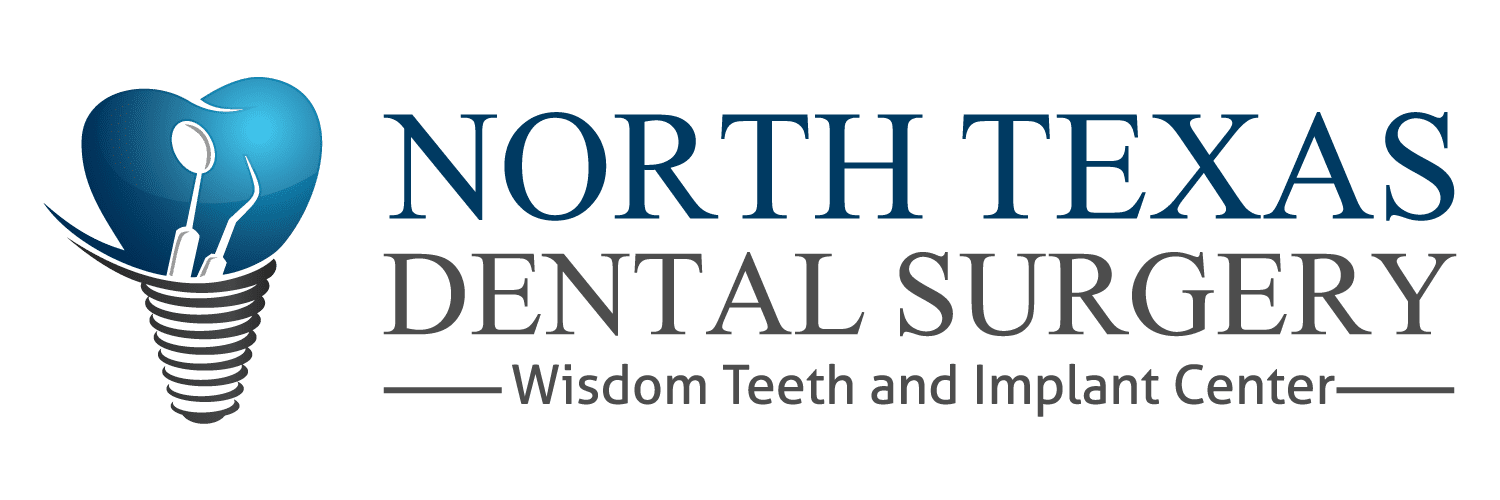Gum Grafting
Gum recession is essentially a condition where the gum starts to pull away from the teeth. Over time, this process usually continues until small pockets start to form between the teeth and gums. These small pockets heavily promote bacterial build up. Without an excellent oral hygiene routine (or intervention from your dentist), this bacterial build up can cause severe issues over time.
Before Surgery
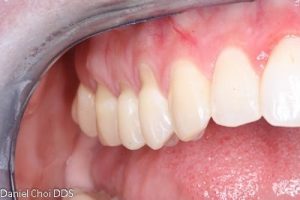
After Surgery
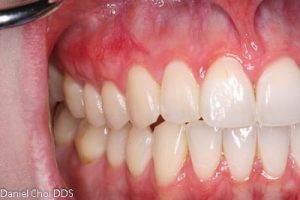
If caught early enough, gum recession can be treated by your dentist without requiring gum grafting surgery. As such gum recession is not something you should delay in treating. It should be addressed as soon you think you might be suffering from it. However, as we mentioned earlier this is often easier said than done due to the slow, gradual nature of the recession. If left untreated, gum recession can cause serious oral health issues. The small indentations that are formed in the gap between your teeth and gums continue to grow in size. They also continue to promote bacterial growth, which can increase the risk of gum disease and cause other issues.
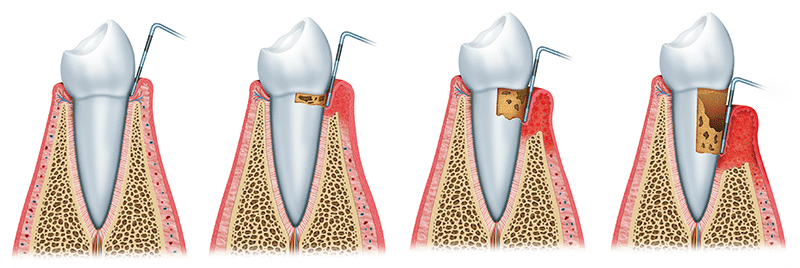
Gum Disease
The number one cause of gum recession is gum disease. If gum disease is caught and treated while in the gingivitis stage, it is treatable and recession can be prevented. However, without treatment, over time gum recession is inevitable. Especially, when the gum disease reaches a more advanced stage known as periodontitis. At this point, a surgical procedure is required to remove the bacterial infection from underneath your gums.
Gum Recession Prevention
To prevent gum recession, you need to keep your teeth and gums clean and healthy. To do this, brush your teeth thoroughly, but not too harshly, twice a day with a soft toothbrush. Also, be sure to floss every day, as this is essential for preventing plaque and bacteria build up along the gumline. For an extra layer of protection, use an antiseptic mouthwash. Be sure that you always are consistent with your 6-month check-ups so that you can be one-step ahead of gum recession.
Gum Recession Causes
AGGRESSIVE BRUSHING– Many people are seemingly unaware that brushing your teeth too vigorously can have negative consequences for your teeth and gums. One of these consequences is gum recession. Using a toothbrush that is too firm for your brushing style, or applying too much pressure while brushing can cause recession over time.
GRINDING YOUR TEETH -Grinding your teeth while sleeping (or awake) puts an almost constant and unusual amount of stress and pressure on your gums. Over time, this weakens the gums and can cause several issues, one of which is gum recession.
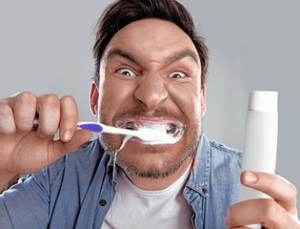
HORMONES – One of the less commonly known reasons for gum recession is related to female hormones. During puberty, pregnancy, and menopause a female can be much more likely to experience gum recession than normal.
PIERCINGS – Tongue, cheek, and lip piercings are reasonably common causes of isolated instances of gum recession. Over time the piercing in the mouth can repeatedly rub against the gum, which slowly but surely wears them away causing gum recession.
SMOKING – When it comes to your health, there is not much that smoking does not harm. Smoking has numerous negative effects on your oral health, one of which is the build up of a sticky plaque on your teeth. This plaque can turn into tartar over time, which then causes gum disease and gum recession. The CDC states on their website that smokers are over 4 times more likely to develop gum disease as a result of their addiction.
Benefits of Gingival Grafts
- Diminished sensitivity- With the exposed root covered, gum grafting helps reduce the discomfort associated with tooth sensitivity. You wouldn’t have to be selective and overly thoughtful of the temperature of food you’d love to eat making for a comfortable eating experience.
- Improved gum and oral health- Regardless of the reason for your gums receding, the bottom line is that it compromises the health of your gums, teeth, and other structures.
Bob's Gum Grafting Experience
Gum Graft Techniques Include:
- Connective tissue grafting– This is a common procedure for overexposed roots. It is a process which involves the removal of a tissue layer within the palate, and later on placed at the site of gum recession.
- Free gingival graft — This procedure removes tissue from the palate as well except a thicker piece is taken directly from the palate instead of within. Once the tissue has been extracted from the roof of the mouth, it is attached to the gums in a very similar manner to a connective tissue graft.
Recovery Gum Grafting
Postoperative care instructions will be given to you by your dentist such as any limits on physical activity, diet and oral hygiene routine. You will be instructed not to brush or floss the repaired gum line until it has healed. A medicated rinse will be used during the healing process and you may be prescribed antibiotics. During the first two weeks after gum grafting surgery, you should eat soft & cold foods. Some examples are: Jell-O, cottage cheese, eggs, ice cream, pasta and yogurt.
Let our staff of board certified periodontists change your smile today. We offer affordable cash prices and we are in network with a majority of PPO insurance plans. Visit us at North Texas Dental surgery in McKinney Texas today for your complimentary consultation and 3D scan.
